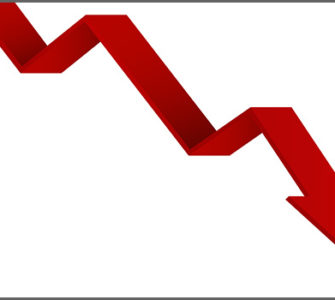Coccidiosis control takes long-term planning
By Donald Waldrip, DVM
Senior Technical Services Veterinarian, Zoetis Inc.
The goal of long-term coccidiosis management is, ultimately, reduced losses from the disease, improved bird performance and better profits for producers.
One of the most important steps poultry producers can take to achieve sustainable coccidiosis management and reduce losses from the disease is long-range planning.
Consider that no new anticoccidials are coming to market anytime soon and that coccidiosis is costing U.S. poultry producers more than $600 million annually, according to U.S. Department of Agriculture estimates (2012).
Acute coccidiosis outbreaks that result in diarrhea and mortality can still occur, but as producers know, the most common form of coccidiosis seen is low-level, subclinical disease that eats away at performance and predisposes birds to a host of other costly problems, including dysbacteriosis, necrotic enteritis and gangrenous dermatitis. It is widely accepted that eliminating coccidia from the commercial poultry environment is difficult, if not impossible.
The absence of any new anticoccidials, coupled with the tenacity of coccidia, underscores the importance of preserving the efficacy of available in-feed anticoccidials, which means preventing the development of anticoccidial resistance.
Toward this end, planning rotation programs ahead by at least one year — and preferably by two or more years — is essential because it takes time to rotate enough different products and give each one used an adequate rest.
Rotation mistakes
Although many poultry producers are rotating anticoccidials effectively, some aren’t rotating enough or as wisely as they could. The reason could be that short-term performance and profit goals take precedence over the development of a longer-term, sustainable coccidiosis management strategy. In other cases, it’s simply a matter of old habits prevailing. Either way, the result is the development of resistance and a decline in anticoccidial efficacy.
For instance, one common mistake often seen in the field is switching from a monovalent ionophore, such as monensin, to another monovalent ionophore, such as salinomycin. Both are in the same class of ionophores; they work similarly, and if resistance develops to one, it’s likely to develop to the other.
If a monovalent ionophore has been used, it’s better to switch to an ionophore in another class — to the divalent ionophore lasalocid or to a synthetic anticoccidial like clopidol, decoquinate or nicarbazin. As a general rule, the same class of ionophore should not be used for more than six consecutive months.
Synthetic anticoccidials are highly effective against wild-type coccidial strains, but coccidia can develop resistance to them more quickly than to ionophores (Figure). For that reason, synthetics should be used very judiciously.
If a synthetic is administered as part of a shuttle program — where the same flock receives one anticoccidial in the starter feed and another in the grower feed — it should not be used for longer than about 4.5 months. If a synthetic is used as part of a cleanup program aimed at field strains of coccidia, it’s wise to avoid using it for more than three months. In either case, the same synthetic should not be used again for at least 20 months to preserve its efficacy for future flocks.
Specific rotation programs are going to vary widely depending on the needs and goals of each poultry farm, but a two-year program might involve the use of an ionophore/chemical combination, then a vaccine, then an ionophore from a different class and then a single chemical.
Role of vaccination
Vaccination can play an important role in coccidiosis management programs. It is already used widely in the breeder and layer segments of the industry, where long-term immunity is needed, and many broiler operations are now vaccinating at least a portion of their flocks.
Chickens receive a controlled dose of live coccidial oocysts either in ovo or at the hatchery to stimulate natural immunity against coccidiosis. Vaccines give in-feed anticoccidials a rest; they also seed the poultry house with live coccidia oocysts that are highly susceptible to the in-feed products and, in that way, restore their efficacy (Peek and Landman, 2006; Williams, 2002).
Some producers are hesitant to initiate vaccination because it can result in the so-called “first-cycle blues” — a dip in performance that occurs when birds are challenged with wild-type field coccidial strains at the same time in-feed medications have been pulled.
Research and field experience have demonstrated, however, that the drop in performance that may occur after the first cycle of vaccination can be controlled with the administration of an ionophore after birds develop immunity to coccidia from the vaccine (Cookson et al., 2013). Performance improves with subsequent cycles of vaccination, so it can be shortsighted to bail out on vaccination after just one cycle.
Science-based program
To help producers develop more effective, sustainable coccidiosis management, Zoetis has initiated a science-based program called Rotecc Coccidiosis Management. Zoetis consultants review past and current farm programs, necropsy data and results from anticoccidial testing, as well as the farm’s seasonal preferences for product usage, production goals and management practices.
Other variables such as feed costs and meat prices are considered, and the information is used to help producers develop appropriate and effective coccidiosis management programs that draw on available anticoccidials.
Zoetis is also developing tools to help facilitate Rotecc. The consultants will use the Rotecc Program Advisor — an iPad application — and the Rotecc Calculator to help them guide long-term coccidiosis decision-making for poultry producers.
Ultimately, the goal of long-term coccidiosis management is reduced losses from the disease, improved bird performance and better profits for producers.
References
Cookson, K., et al. 2013. Effect of lasalocid or salinomycin on performance and immunity following coccidia vaccination of commercial broilers. American Veterinary Medical Assn. convention notes; American Association of Avian Pathologists Symposium. Pfizer study #03-11-7AMVG.
Peek, H.W., and W.J. Landman. 2006. Higher incidence of Eimeria spp. field isolates sensitive for diclazuril and monensin associated with the use of live coccidiosis vaccination with Paracox-5 in broiler farms. Avian Dis. 50(3):434-439.
U.S. Department of Agriculture, Agricultural Research Service. 2012. Cracking down on poultry disease with egg yolk. Agriculture Research. 60(6):9.
Williams, R.B. 2002. Anticoccidial vaccines for broiler chickens: Pathways to success. Avian Pathol. 31(4):317-353.
Article courtesy of Feedstuffs
Editor’s note: The opinions and recommendations presented in this article are the author’s and are not necessarily shared by the editors of Poultry Health Today or its sponsor.
Posted on October 15, 2014













